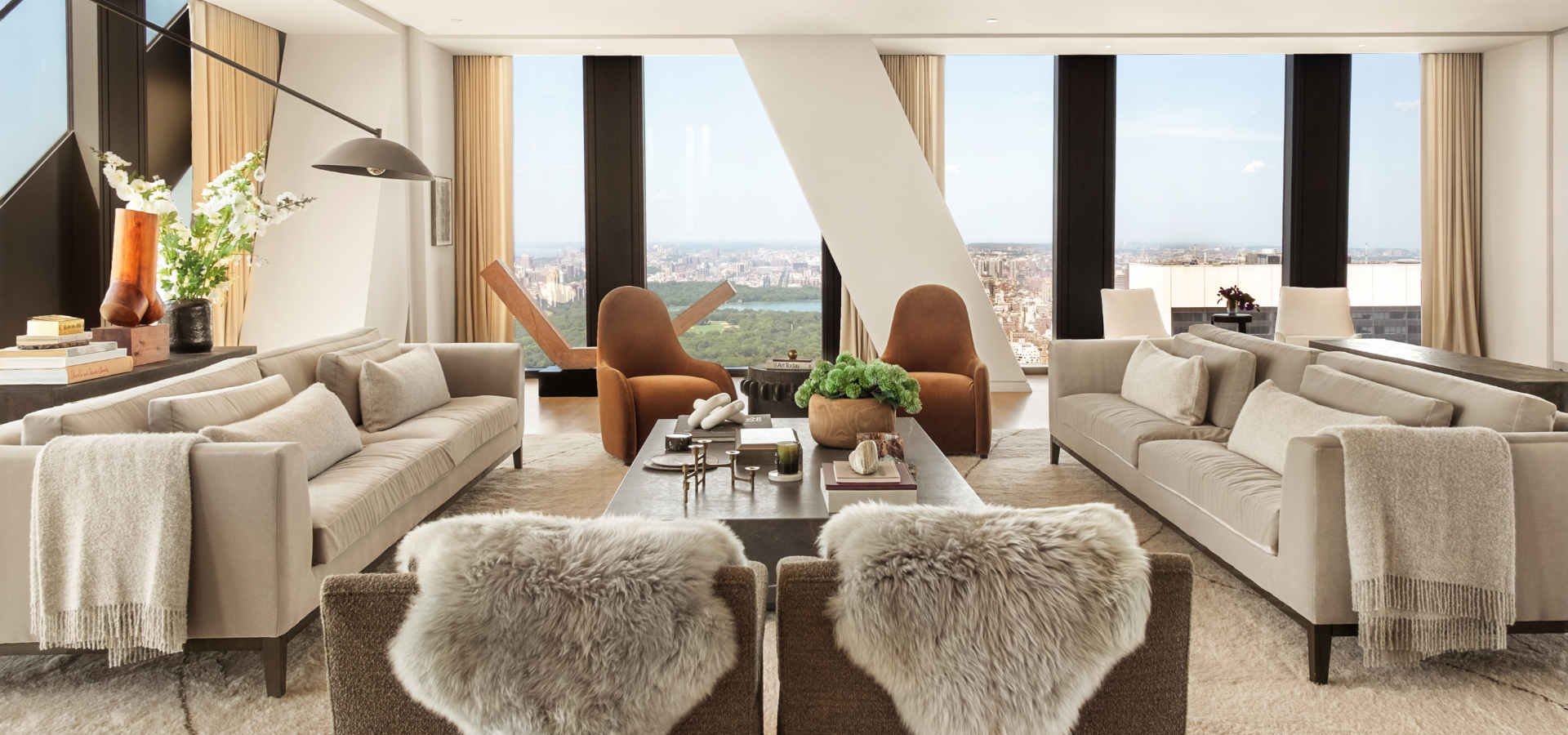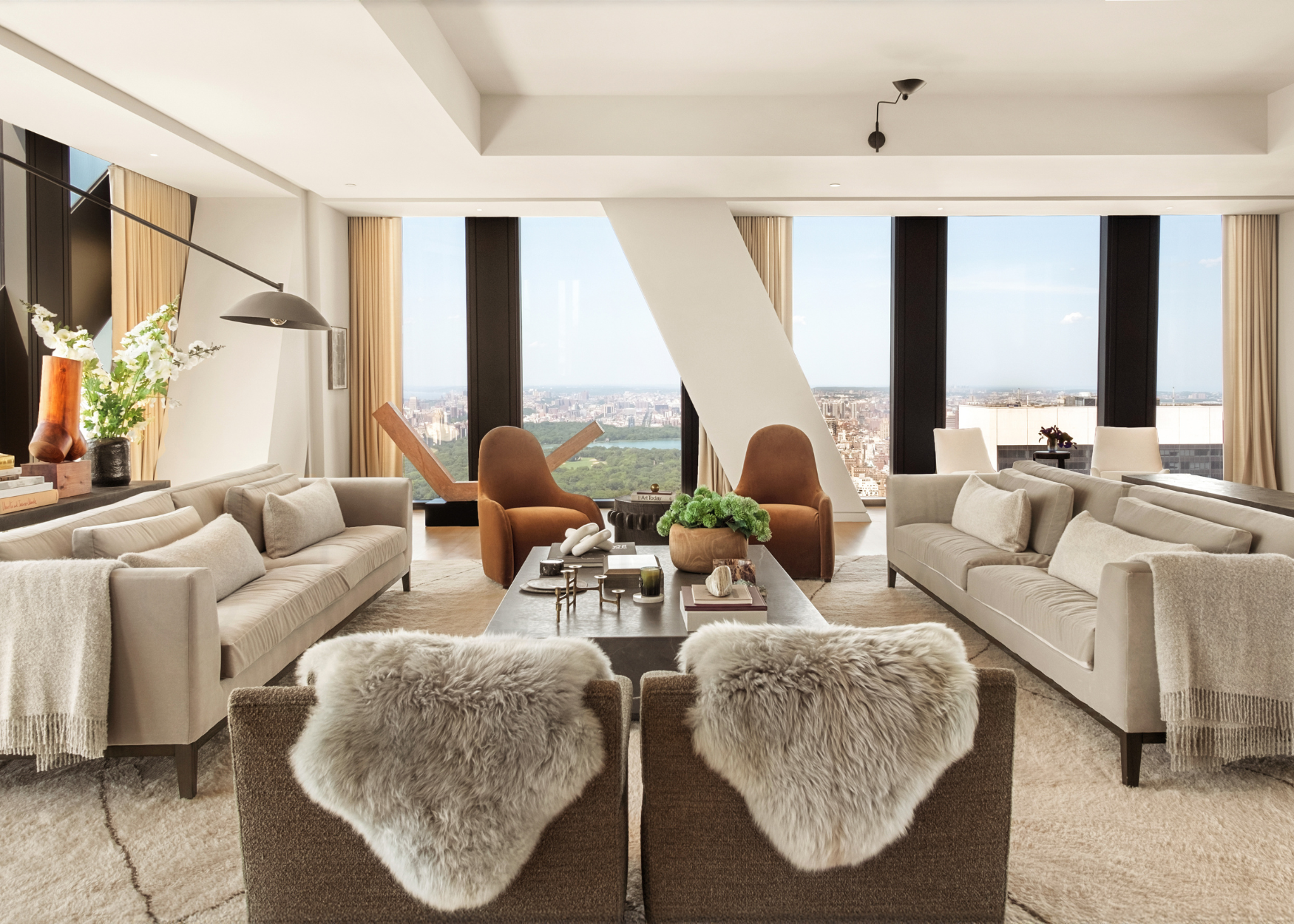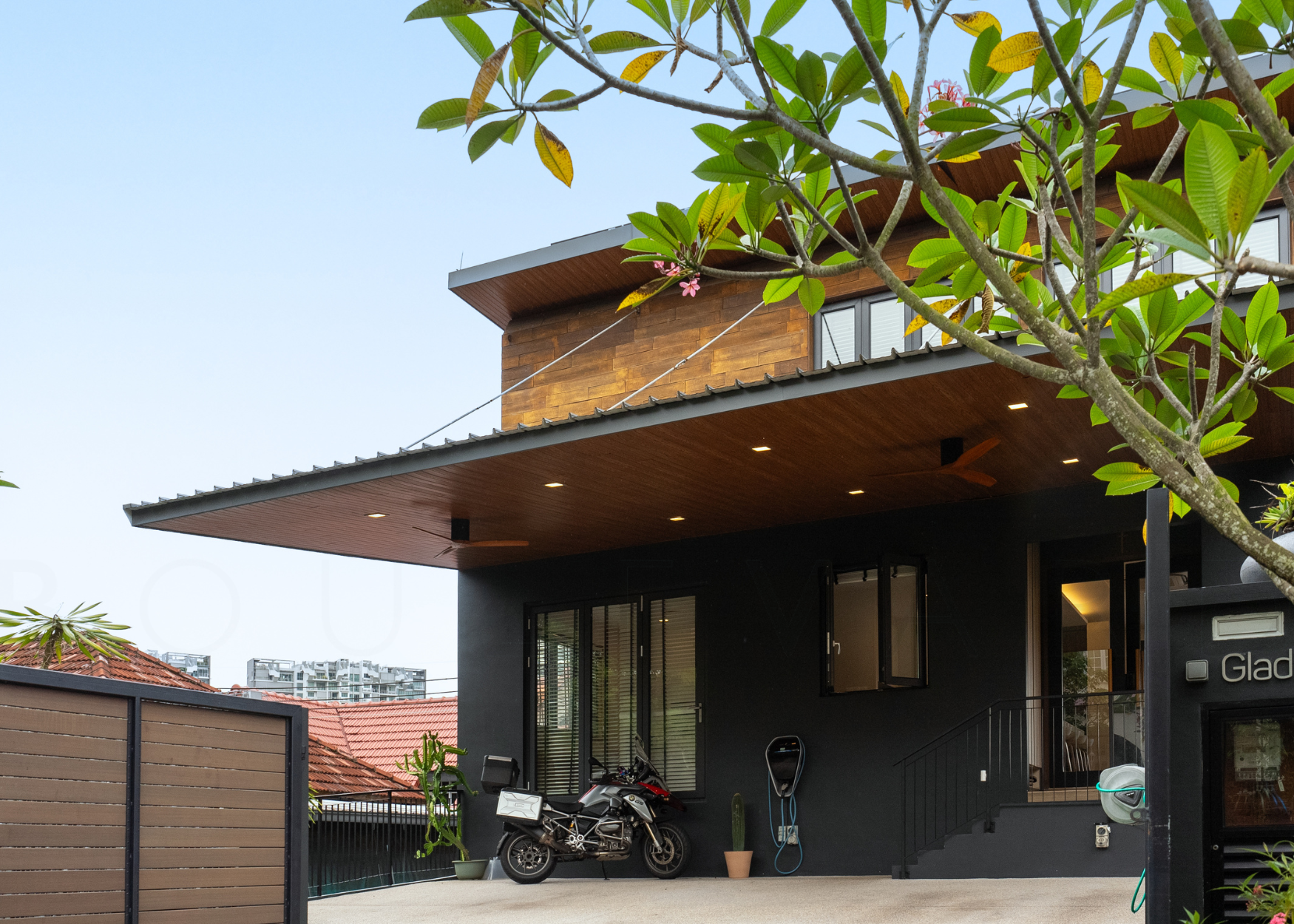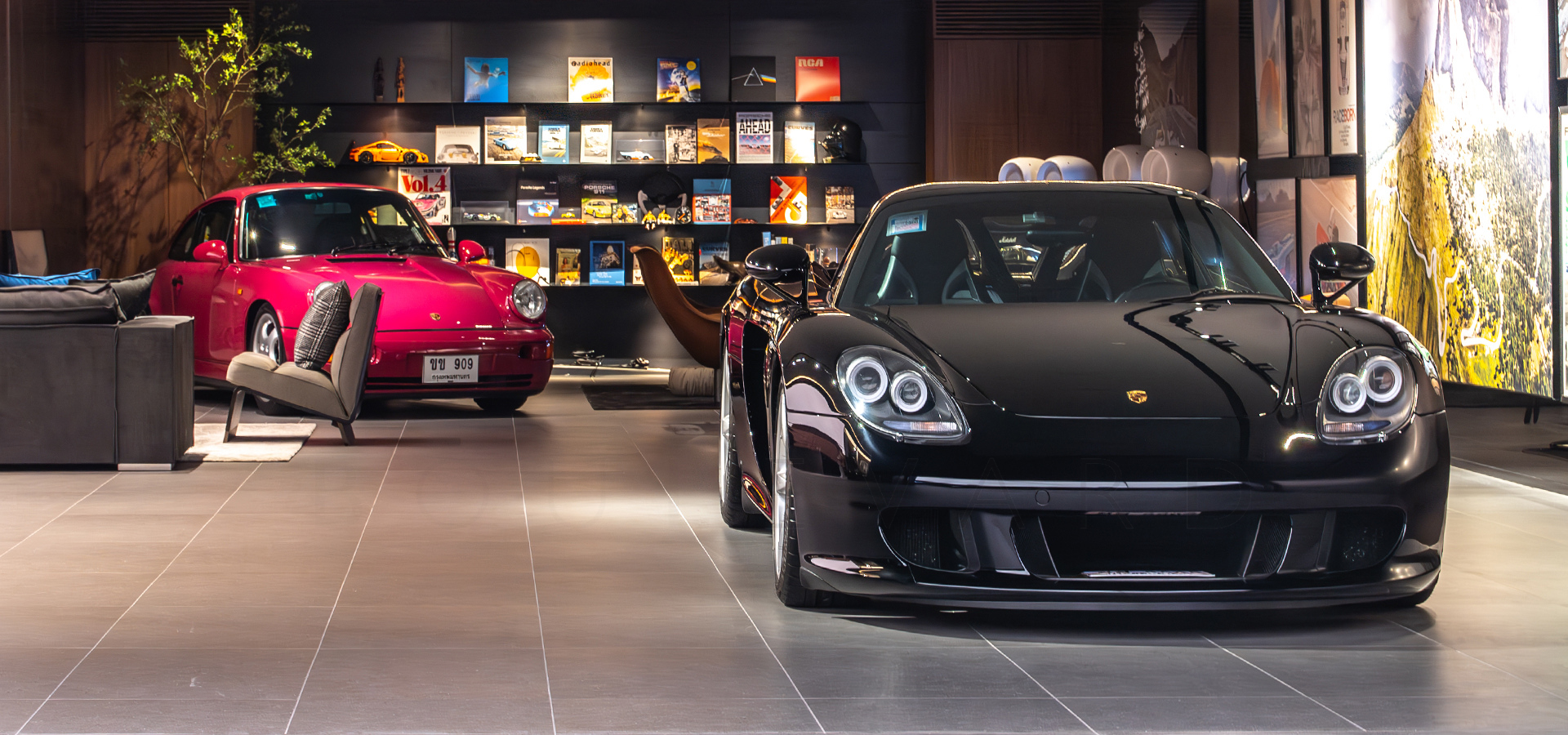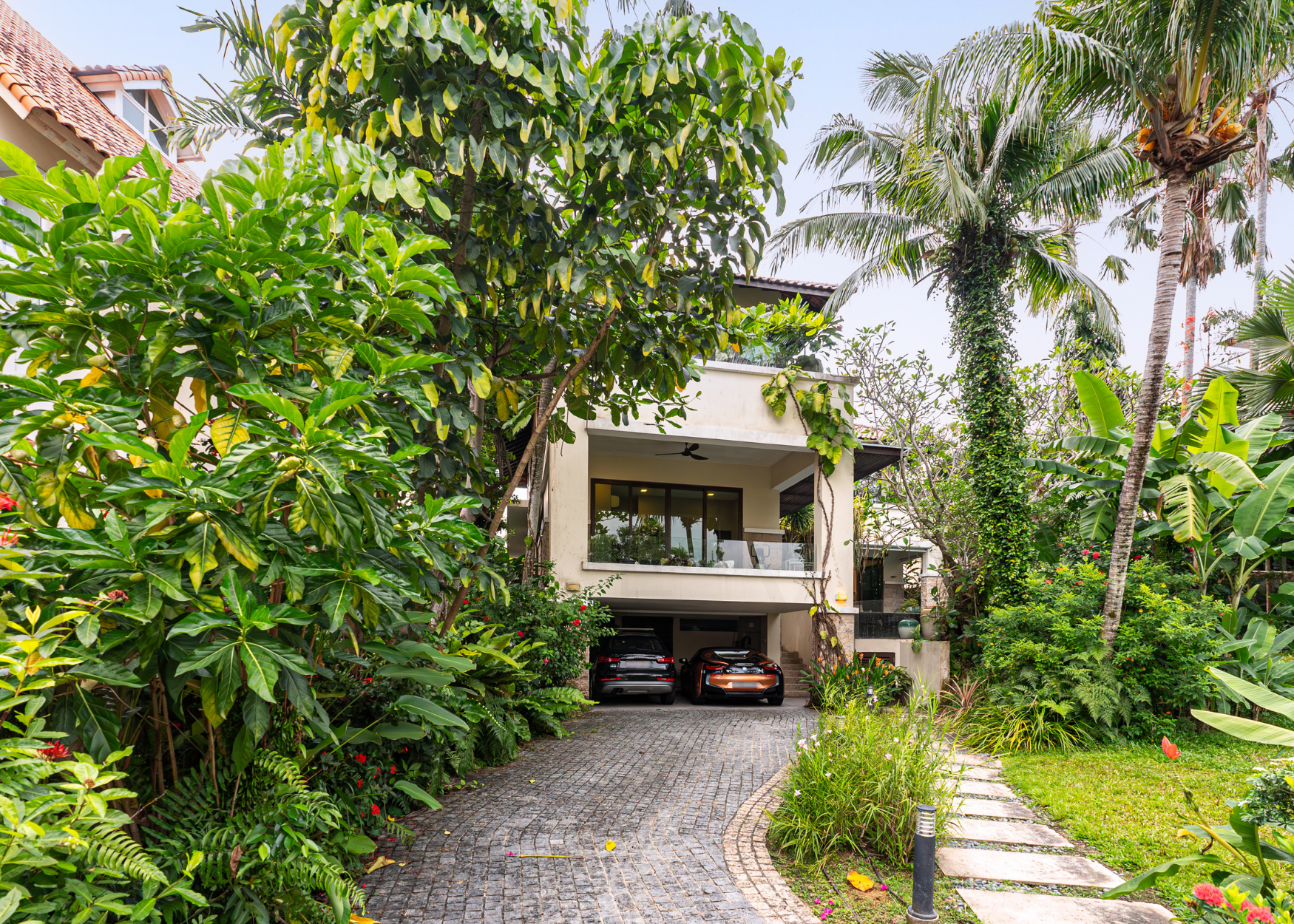The interview: Jade Chan on New York City’s enduring investor appeal and latest skyline icon—53 West 53
by Hamish McDougall
Photography by Fuad Shafiyev
Few addresses capture New York City’s allure quite like 53 West 53—a soaring Jean Nouvel-designed tower that rises above the Museum of Modern Art and commands an unrivalled position in the heart of Midtown Manhattan.
In this exclusive conversation with Boulevard, Jade Chan of Douglas Elliman Real Estate shares her insights on what makes this architectural icon stand apart, how today’s ultra-high-net-worth buyers are redefining luxury living in New York and why discerning local and international investors continue to place their faith—and fortunes—in the city’s ever-evolving skyline.
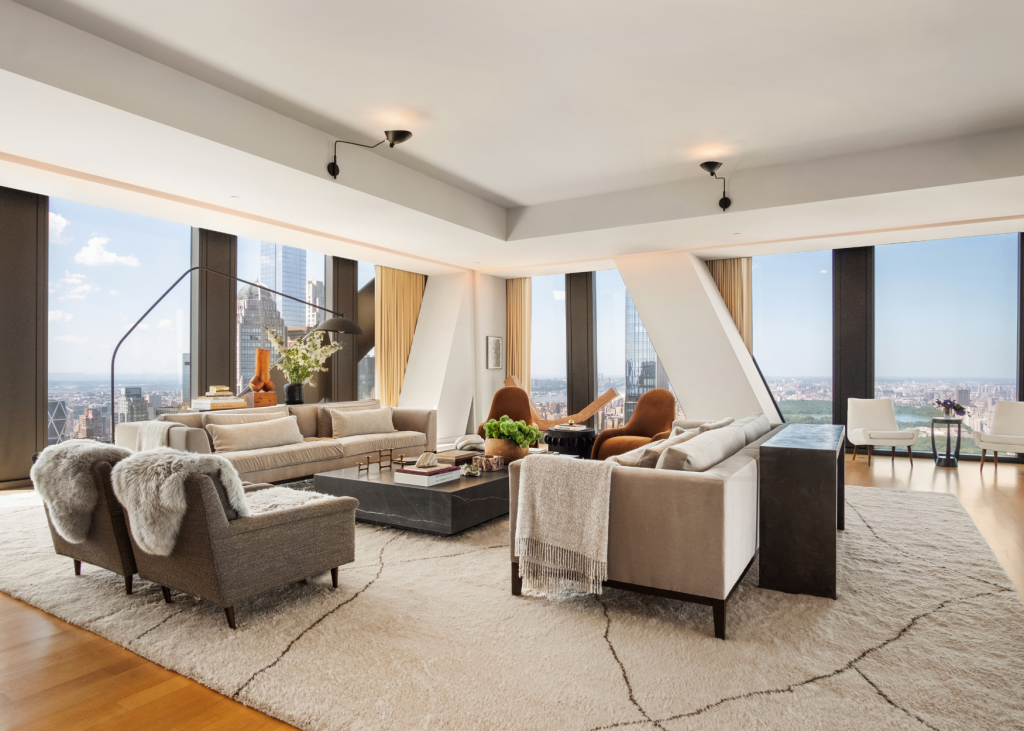
Supertall and ultra-luxury, 53 West 53 is the latest, iconic addition to the New York skyline.
Boulevard: We’re sitting in this stunning full-floor, Central Park-facing residence—one of the last for sale at 53 West 53. What’s unique about the project?
Jade Chan: So, 53 West 53 is unique because we have 161 residences in the heart of Manhattan—on 53rd between Fifth and Sixth Avenue—and each residence is completely unique. Jean Nouvel is the architect, with interiors by Thierry Despont, making it a true masterpiece. We’re located just above MoMA, and all owners become benefactor members of the museum. That ties into the idea that each residence is like an individual work of art.
What’s also great for both domestic and international buyers is the level of service. In addition to the amenities—like a private lounge where breakfast and lunch are served Monday through Friday, a spa, an indoor pool with live green walls, a large fitness centre (arguably the largest in any residential building in Manhattan), a screening room, and a golf simulator—we offer exceptional services.
For example, if you’re purchasing a pied-à-terre, you can contact the concierge and say, “I’m coming into town in 24 hours,” and we’ll prepare your apartment. That can include pantry stocking and a fresh bouquet of flowers on the coffee table—so the moment you walk in, you feel at home, as if you never left.
Blvd: And in terms of the positioning of the interiors and finishes, what stands out for you?
Chan: My favourite aspect is the beautiful ceiling heights—we have 11ft ceilings, and even with drop ceilings, ours still reach about 10 ft, which is higher than most.
We also have amazing floor-to-ceiling windows throughout the entire residence. What’s unique about them is that they’re UV protected. Tying back to our relationship with the MoMA, we want to protect your art. So even if you’re not here, your art is safe—not just from a security standpoint, since the building’s security is top-notch, but also from sun exposure. You don’t have to keep your shades down.
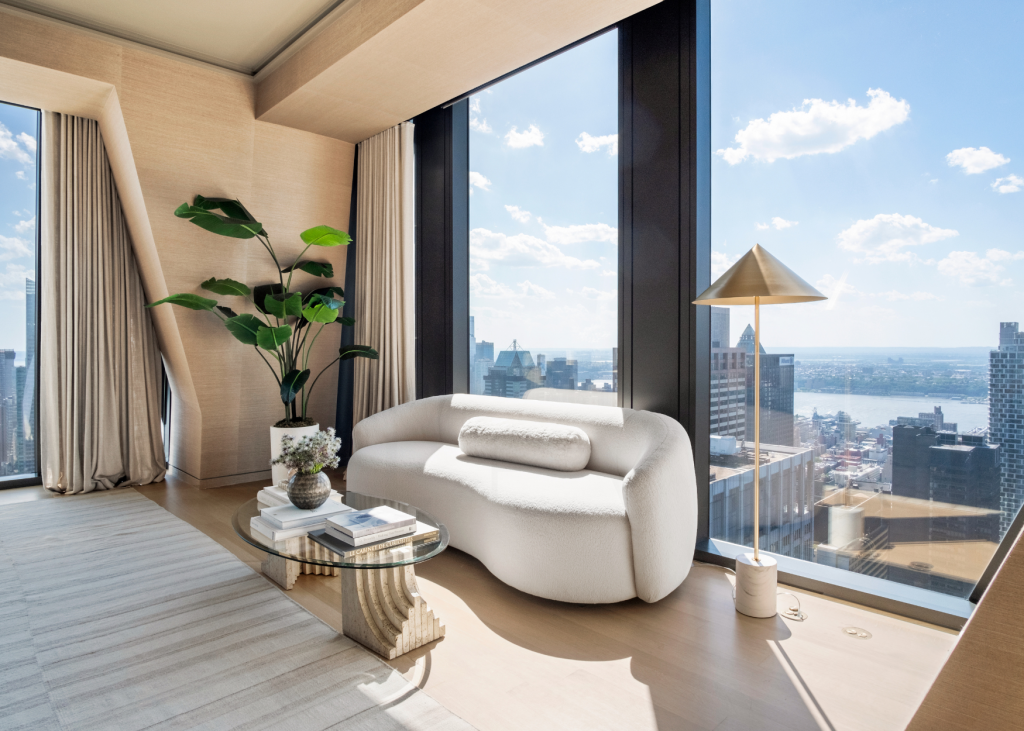
Architect Jean Nouvel laid out floor-to-ceiling views in all directions.
Blvd: And of course there’s this wraparound view.
Chan: Yes. Being situated right in the heart of Midtown, we’re literally in the centre of the island. We’re overlooking Central Park. As we were saying earlier, we’re still surrounded by buildings, but we’re high enough to have completely open views to the north, east, south, and west. Yet you still feel the context—you see the sparkling city at night, and during the day, the Hudson River, Central Park, and Billionaires’ Row in the background.
You can wake up facing any direction. It’s rare to have even a single room with exposures in all directions and that sense of expanse.
In this specific residence—Residence 66—it’s a full-floor unit. So you’re getting the entire 360-degree view. But the most special aspect is the primary bedroom. It’s one of a kind in that it has triple exposure. You wake up overlooking Central Park, go to sleep watching the sunset over the Hudson River, and see the sparkling city to the south, all the way down to the World Trade Center.
Blvd: What are the use cases and owner priorities for a property like this?
Chan: Well, it’s wild to say, but this is usually a second, third, fourth, or even fifth home—and we’re still talking about a $40 million residence. We do have some full-time residents as well. But the main priorities I see in buyers at this level are space and views. High ceilings are also a major factor.
Of course, finish quality is important—especially with supertall buildings. This building, for example, is nearly 335m tall. And with that height, there are structural considerations. At 53 West 53, we have two tonnes of weight at the top of the building to dampen sway. And in terms of design by Jean Nouvel, the building has a wide base that tapers as it rises. So there’s a level of engineering and quality people look for when buying into a supertall.
Finishes are always a priority. But what I’ve been seeing over the past several months is that the definition of luxury has changed. Post-covid, people live very differently. Now, convenience defines luxury. The old idea of luxury in real estate was more about materials. For example, here we have beautiful walnut high-lacquer wood, 10ft door frames, or even gold fixtures—24-carat gold, for that matter. That used to be the checklist.
Now, people want service. And not just amenities, but actual service. Like walking into your apartment and finding fresh flowers already on the table—without needing your property manager to handle it. As I like to call it, there’s a built-in family within these buildings. That’s what’s expected now. You don’t want to think, and you want everything already taken care of.
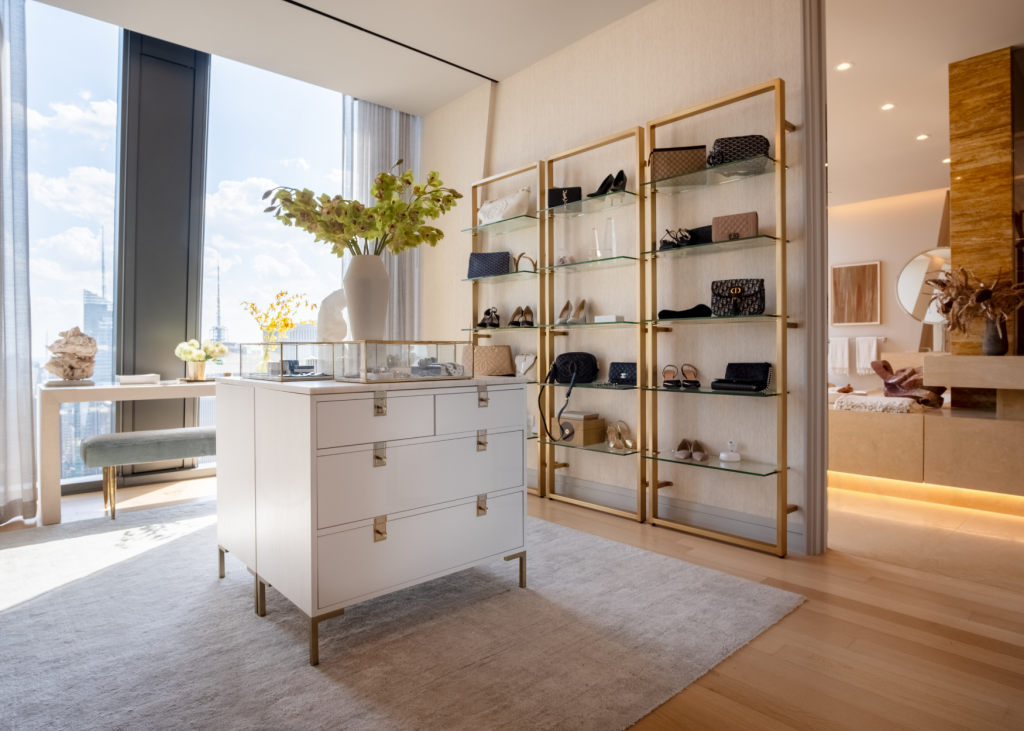
Designer interiors feature walnut high-lacquer wood, exquisite stone finishes and 11ft ceilings.
Blvd: And another thing that’s clearly changed is the amount of space people now want. In this building, it starts from an unbelievably generous 1,200 sqft?
Chan: Yes. In this building, our one-bedrooms, as you mentioned, start at around 1,200 sqft. For comparison, the average one-bedroom in Manhattan—across the board, not just in luxury buildings—is about 750 sqft. So we’re almost doubling that as a starting point.
That scale implies a certain kind of community—a like-mindedness, especially among homebuyers. If someone’s buying a second home and spending multiple millions, they’re most likely coming from a very large residence.
Blvd: How are you seeing the market more broadly at the moment?
Chan: I don’t have the full Q2 numbers yet, but I can tell you that what we consider the luxury market in Manhattan—$4 million and above—has been averaging over 30 contracts signed per week.
Looking at Q4 of 2024, we saw the highest dollar-volume since 2021, which itself was the highest since 2015. So we’re still on an upward trend. Even at the $10 million and above range, we’ve seen steady activity. And in the $20 million-plus category—where you’d expect demand to thin out—we’re still seeing strong interest. That level of product is being absorbed.
If you look at the past ten years, we hit an inventory peak in 2015. Now, we’re at a low.
It’s also an interesting moment because we’re in a somewhat volatile environment—not necessarily in real estate, but in the broader market, especially with the new administration. Some buyers are hesitant. But the smart buyers are moving now, because that’s when you lock in value. Once the market stabilizes, that’s when everyone else jumps back in. So right now, there’s less competition—but still a lot of transactions.
Blvd: Do you see a retreat to ultra-prime real estate among savvy buyers during these volatile periods?
Chan: Yes, definitely. We’ve seen a lot of private family offices investing more into blue-chip assets—especially in New York City, which I always say is arguably not just the greatest city in the US, but one of the greatest cities in the world.
Whether you’re a domestic or international buyer, if you’re purchasing an asset—whether it’s under $1 million or well into the hundreds of millions—in a location that will always be in demand, like Central Park, Tribeca, SoHo, or the West Village, you’re in a strong position. You’re unlikely to lose.
Of course, there are circumstances—like needing to sell during a down market—that can affect outcomes. But over the long term, you’re in it to win it, especially in New York City.
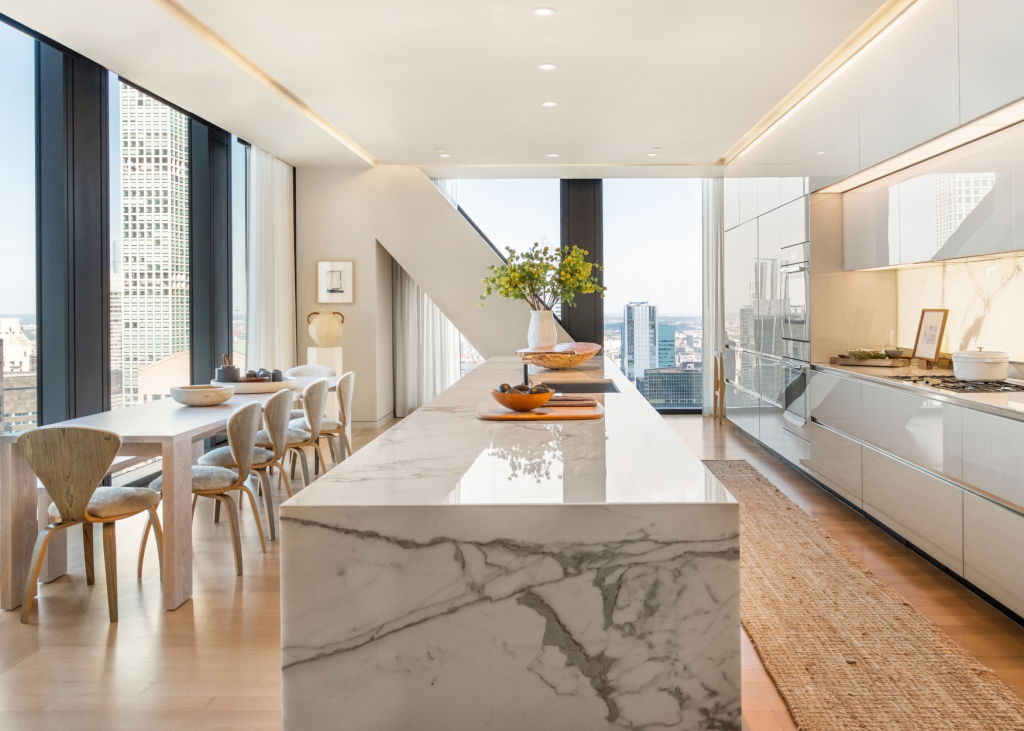
The full-floor, four-bedroom Residence 66 features a lavish kitchen and breakfast room.
Blvd: For a while, there seemed to be a dip as people shifted their interest—if not themselves—towards places like Miami and Palm Beach. Would you say we’re coming out of that now, with renewed interest in the city?
Chan: A hundred per cent. A lot happened to us. Obviously, 2020 impacted everyone globally, but New York City was hit especially hard. We saw a mass exodus—not just because of covid, but also due to tax changes. Billions of dollars in tax revenue left New York for places like Florida, Texas, Wyoming, and Nevada—states with no or low state income taxes.
What’s interesting is that even though many people left, they didn’t fully disconnect from New York. Many sold their larger homes here and moved their primary residences to Florida, but they kept a footprint in the city. And now, we’re seeing that footprint grow again.
Look at Amazon—Jeff Bezos recently bought another commercial building here. Amazon is back in the office. All the banks are back. Real estate companies never really left. The city is alive again. In fact, it feels like a rebirth—stronger and more vibrant than before.
New restaurants have opened, new energy has returned. Midtown, where we are now, has always been seen as commercial—but we’re seeing a shift. Prime locations like Fifth Avenue are still luxury hubs. We’re steps from Saks, Prada, Louis Vuitton, and the MoMA. There’s also great dining now. This resurgence is thanks in part to developments like 53 West 53 and nearby Billionaires’ Row buildings.
Midtown still has its commercial core, but there’s a growing residential feel. It’ll never be the Upper East Side—but even the Upper East Side, which was probably the hardest-hit luxury neighbourhood during the pandemic, has bounced back. It’s always been a bastion of ultra-luxury, and now it’s experiencing its own renewal.
Many retailers left, but they’ve returned. You still have the classic restaurants, but now for every original, there are three or four new ones—plus private members’ clubs and younger residents who want to live there again. It used to be that if you grew up on the Upper East Side, you wanted to move downtown. Now people are choosing to stay—or move back.
So really, we’re seeing a full evolution of Manhattan. At this point, it feels like people just want to be anywhere in the city.
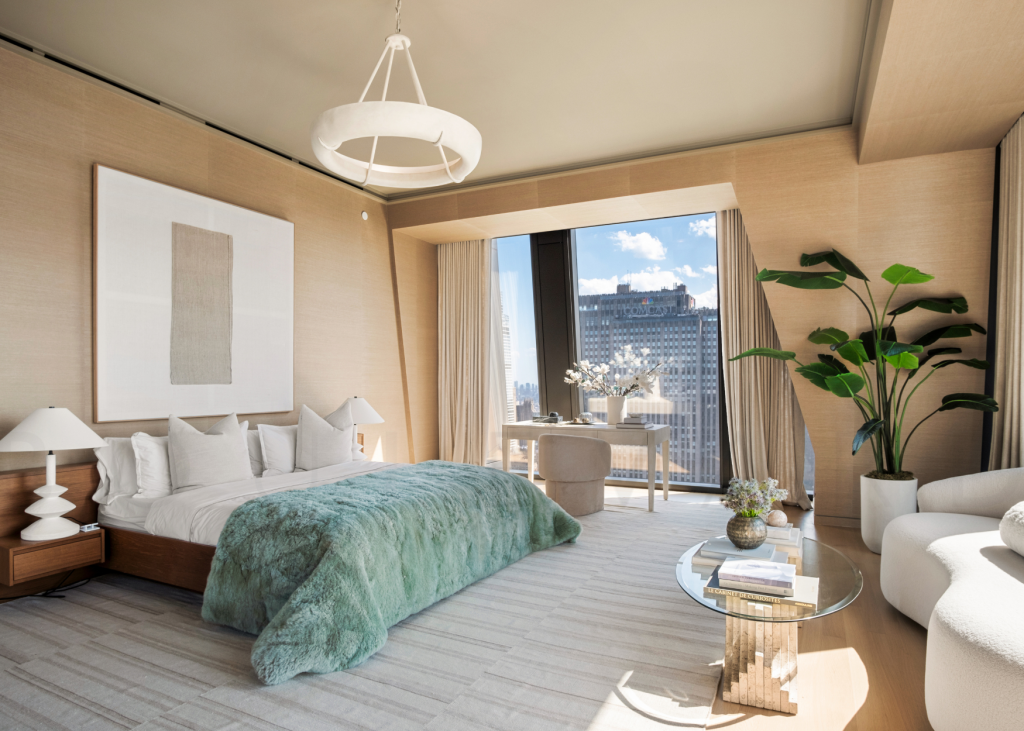
Blvd: When working with international buyers—each with different priorities, lifestyles and reasons for investing—how do you guide them through New York’s diverse neighbourhoods and help match them with the right kind of property?
Chan: That’s a great question. It really depends on what the buyer is looking for. Are they seeking a pure investment? Buying for a child moving here for university or their first job? Or is it a pied-à-terre?
For me, I like to take a personal approach—because ultimately, this is a personal purchase. Yes, it’s a business transaction, but there’s emotion involved. I always say, no matter how much money you’re spending, there’s some level of sacrifice. You could be spending $250 million and still not get that one specific view you wanted—just as an example.
So I try to understand the buyer’s mindset. Do you want quiet, or do you want to live and breathe the energy of the city? Do you want to walk to shopping or to entertainment? Are you comfortable taking the subway, or do you rely on a driver or Uber? These small preferences make a big difference.
That said, even with all those micro-level details, at a macro level it still comes down to location, location, location. You want to be near the park, near the water, near a subway station—even if you won’t use it—because that affects investment value. Waterfront locations might be a bit further east or west, but again, it depends on your priorities.
It’s like science—putting the puzzle together. Property is lifestyle. Choose your lifestyle, and I’ll find you the property. New York City is not for the faint of heart. It all comes down to how you want to live. Will you do your own grocery shopping, or do you want the building’s concierge team to handle everything, even stocking your pantry with online orders? There’s something for everyone.
Blvd: What are some of the challenges you face and the expectations you need to manage in this space?
Chan: That’s something I always say—being a real estate agent means wearing many hats. I’m not just an agent; I’m a therapist, a mum, a sister or a friend.
One of the biggest challenges is dealing with buyers who believe they know more than we do. These days, people have access to so much data, which is great—but it can also be misleading. And that’s where the tension can come in. It’s a good challenge—it keeps things interesting—but managing that balance between expertise and perception is a real part of the job.
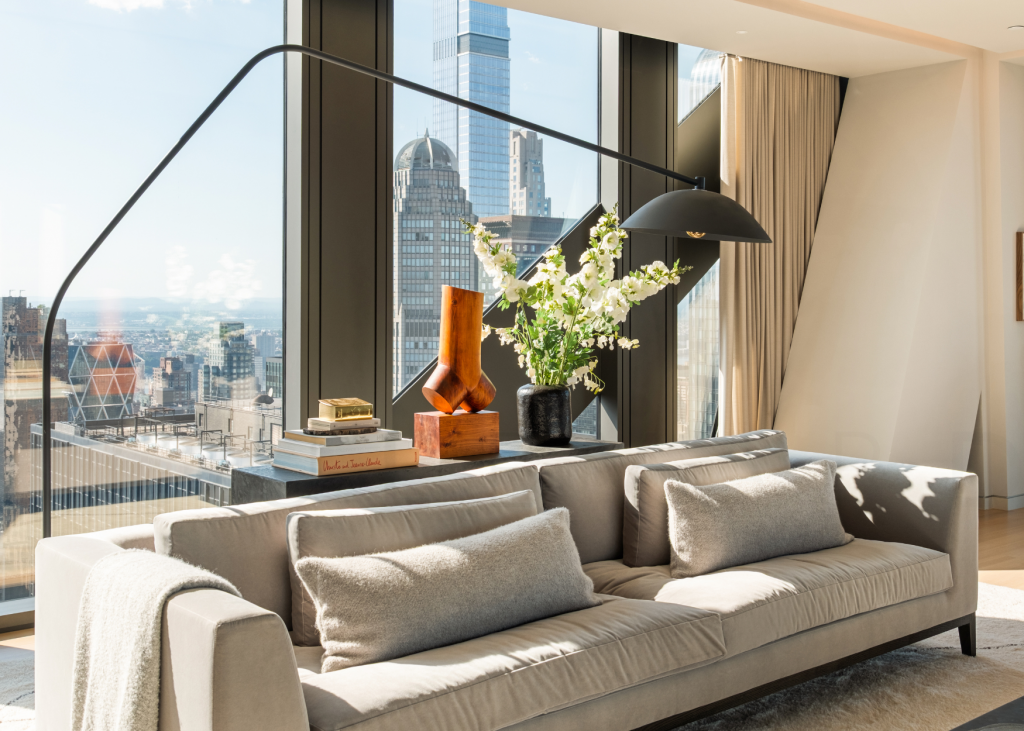
Blvd: What are some of the preconceptions buyers come in with?
Chan: Even recently—when I was in Singapore about six weeks ago—people were saying, “I heard the city’s dangerous,” or “I heard the market is crumbling.” It’s interesting, and it’s something I constantly have to navigate—understanding what’s being said outside of New York.
Buyers come from Singapore or other parts of the world thinking New York City is falling apart, so they assume they can get 30 per cent off the asking price. And I have to explain—no, that’s not really what’s happening here.
Yes, some properties are overpriced, and in those cases, you might get a discount. But realistically, most homes trade at around five to ten per cent off asking. In new developments, occasionally you can get up to 25 per cent off—but only if the pricing hasn’t already been adjusted. That’s the exception, not the rule. You’re not coming here and picking up real estate like it’s a handbag on sale. That’s one of the key misconceptions we often have to address.
Blvd: And what about landed homes—townhouses—versus condo properties? Do you work much with land—and does it see the same level of transaction volume?
Chan: Townhouses are the closest thing we have to landed property. They saw a huge resurgence during and after covid because people wanted more space and private outdoor areas. Some newer condo buildings offer outdoor space, but the demand for townhouses really spiked. That market has now stabilised a bit, but compared to pre-covid levels, they’ve definitely bounced back.
Blvd: Do foreign buyers tend to stay away from townhouses because of the upkeep involved?
Chan: Yes—for pieds-à-terre, most of my clients tend to purchase condos. It’s largely because of the upkeep. With a townhouse, you’re dealing with a standalone home that might sit empty for long periods if you’re not here.
That said, I do have some buyers who’ve purchased townhouses, especially because they can be considered trophy properties. But in general, the majority of townhouse buyers I’ve worked with are using them as primary residences.
Blvd: What are you still learning about the market and about real estate?
Chan: Every day I learn something new. I started out in the luxury new development space, and I’ve been doing this for 13 years now. But over the past five or six years, I’ve transitioned more into secondary sales.
It’s funny—when it comes to new development, I can tell you everything: I’ve studied the offering plans cover to cover, sometimes thousands of pages. I can tell you where the pipes are in the walls. But with secondary sales, I still find myself thinking, “Wait, I need to reach out to the managing agent for that specific detail,” because it’s not handed to you like it is in a new dev file.
New York City real estate is constantly evolving. Whether it’s a co-op, condo, or cond-op, every building has its own rules and processes. No agent has sold in every single building, so there’s always something new to learn.
That’s the complexity of this market. I mean, just look at where we are right now—you could easily ask me to find out how many residential buildings are on the island of Manhattan, and I’d have to go digging. It’s that layered.
Read next:
